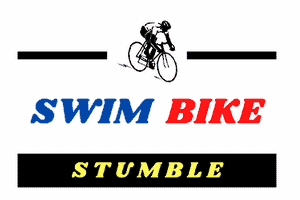This post is based on a couple excellent articles in Outside Magazine by Alex Hutchinson and scholarly papers linked in the articles. I’ll let you read the articles and papers if you – like me – want a look at the science behind this information. The articles are pretty straightforward. Hutchinson did a great job of conveying the information. To be honest I think I understood about 10% of what I read in the papers. Below is my summary of the tips and links to the articles and a couple of the papers. Might be a good idea to follow Hutchinson and the authors on twitter. I am.
Two big takeaways: Timing of workouts appears to be important, and you probably need more protein more often than you think. The articles also introduced two new concepts to me: energy balance and strength training for durability. For now I’ll be changing up the timing of my workouts and consuming more protein as I strength train in the off season. Please consider this as more of the start of a conversation about combining strength and endurance training than as a guide.
From “Is Endurance Training Killing Your Strength?” Outside Magazine
There is an an apparent “interference effect” between strength and endurance workouts. You have to time your workouts and taylor your eating to avoid it.
Baar (Keith Baar @MuscleScience) suggests that you should design your strength workout to use heavy weights so that you reach failure after relatively few reps, maximizing metabolic signals for muscle growth, while minimizing the calories burned and metabolic stress.
It’s especially important to get enough protein throughout the day, to make sure that muscle-growth signals aren’t suppressed by a leucine (an amino acid) shortage. A pre- or postworkout shake isn’t sufficient; instead aim for about 0.25 grams of protein per kilogram of body weight, four to six times a day. If you’re training seriously or older, you may need a higher protein hit—0.4 grams per kilogram—to get the same effect.
You’re better off doing endurance before strength training. Endurance signals stay elevated for about an hour following exercise, while strength signals stay on for 18 to 24 hours.
As a general rule of thumb, if you’re not doing endurance training four or more times a week, or pushing your workouts (i.e., sustaining above 80 percent of VO2max), you’re unlikely to be hurting your strength gains. (In other words, if you are a triathlete.)
From “4 Laws of Muscle” Outside Magazine (based on studies by Professor Luc van Loon)
You Are What You Just Ate
In one of the studies, the researchers found that substantial amounts of protein was incorporated into muscles within just two hours of ingesting it. Just over 50 percent of the protein made it into the subjects’ circulation within five hours. During the same period, 11 percent of the ingested protein was incorporated into new muscle.
If You Exercise First, You’re More of What You Just Ate
The best way to augment protein’s muscle-signaling capacity is simple: Exercise before you eat, and your muscles become more sensitive to protein’s signals. van Loon and his team also did an experiment with a pre-bedtime dose of protein to see if they could boost muscle synthesis as subjects sleep with 40 grams of protein. It worked.
If You’re Inactive, You’re Less of What You Just Ate
older adults seem to need a larger dose of 0.4 grams of protein per kilogram of body weight, rather than 0.25, to max out their rates of protein synthesis.
Chew Your Food
Two interesting facts from one of van Loon’s studies: ground beef was absorbed more quickly, with 61 percent of the tracer amino acid in the ground beef appearing in the bloodstream within six hours versus just 49 percent for the steak. Van Loon also noted that studies in the 1960s found that people who retained more of their own teeth tended to have more muscle.
From “Using Molecular Biology to Maximize Concurrent Training” by Keith Baar
Any high-intensity endurance training sessions should be performed early in the day. Then, a period of recovery of at least 3 h should be given, so that AMPK and SIRT1 activity can return to baseline levels, before resistance exercise is performed.
Resistance exercise should be supported by readily digestible, leucine-rich protein as soon as possible after training to maximize leucine uptake, mTOR recruitment to the lysosome, and protein synthesis. If resistance exercise is performed later in the day, it becomes even more important to also consume protein immediately prior to sleep to maximize the synthetic response overnight.
Fully refuel between the morning high-intensity endurance training session and the afternoon strength session. If it is not possible to refuel completely because of the training volume and intensity, it might be best to reserve a portion of the offseason (and short periods in season) exclusively for increasing muscle size and strength and then use higher dietary protein intakes to maintain that muscle mass as the aerobic load increases through the season.
To improve the endurance response to lower-intensity endurance training sessions and provide a strong strength stimulus, consider performing strength training immediately after low-intensity, non-depleting, endurance sessions.
Links:
Is Endurance Training Killing Your Strength? Outside Magazine
4 Laws of Muscle Outside Magazine
Interference of strength development by simultaneously training for strength and endurance



Great tips for those that are looking to boost their strength during training. It’s good that you pointed out the importance of chewing one’s food. It’s a good way to keep up one’s strength and ensures easier digestion as well.
Thanks for the comment! As a “mature” endurance athlete, I am becoming more and more convinced that there is no substitute for strength.